Bees And Bee Balm
Updated: 30th April 2021
Monarda, also known as 'bee balm' or 'bergamot' is a plant well-known for its attractiveness to bees and butterflies (and in some parts of the world, hummingbirds). Indeed, this plant is often recommended for wildlife gardens generally. The leaves are aromatic, and the tubular flower provide lots of nectar.
We have a clump at the rear of our garden in a sunny spot. It's a useful plant to have as it provide late summer-to-autumn cheer, with its pink and purple blooms, though I admit, it can look a little ragged toward the end of its flowering season. Still, at least the flower stems are quite sturdy and don't need support - not so all the flowers in my border.
Nevertheless, bees don't seem to mind visiting the flowers, even if they are looking a little worse for wear. Indeed, I have often watched them visiting untidy, scrappy looking flower heads with only a few of the tubular flowers remaining, as this image of a bumble bee on a Monarda flower head attests.
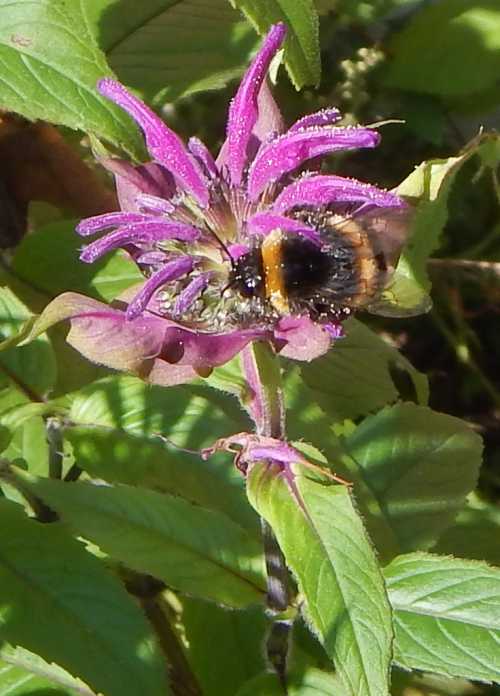 Bumble bee foraging on bee balm.
Bumble bee foraging on bee balm.
Bee balm is one of the mints - Limiaceae, sharing this group of plants with other well-known bee-friendly plants, such as catnip (Nepeta), hyssop (Agastache), sages (Salvia) and lamb's ear (Stachys) - the latter being a special favourite of mine, because it is so attractive to wool carder bees among others.
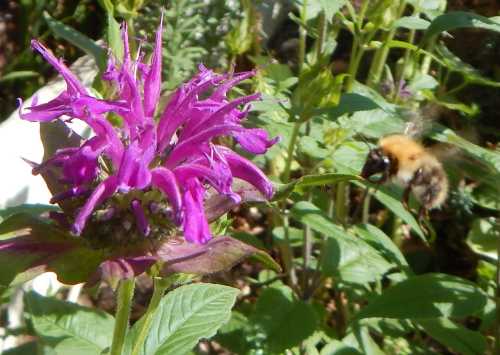 Bee balm (Monarda) is also known as 'bergamot'.
Bee balm (Monarda) is also known as 'bergamot'.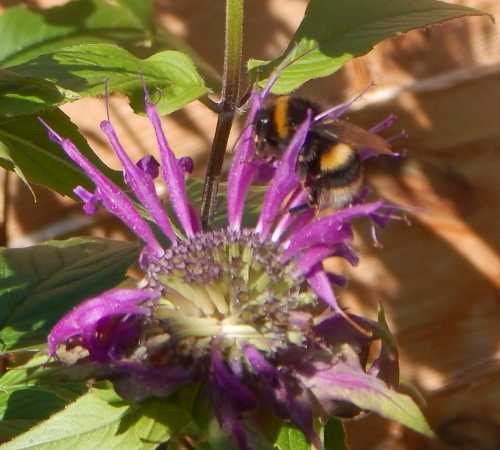 Bumble bees don't seem to mind visiting bee balm, even when the flower heads are ragged and scrappy looking.
Bumble bees don't seem to mind visiting bee balm, even when the flower heads are ragged and scrappy looking.
In addition to its pollinator-friendly flowers, bee balm has been used in traditional herbal preparations. It contains a natural antiseptic, and so has been used for making mouth gargles as well as poultices.
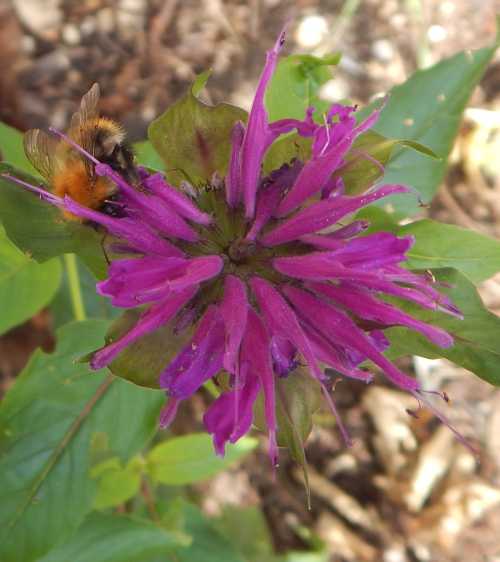 Bee balm is one of the mints - Limiaceae - a flower group with many plants that are popular with bees.
Bee balm is one of the mints - Limiaceae - a flower group with many plants that are popular with bees.
Which bees visit bee balm?
In my garden, visits are mostly from bumble bees of various species, although honey bees are also known to forage upon the blooms.
I find a patch of bee balm seems to keep bumble bees happily busy for a good few weeks, since it's long flowering.
Growing bee balm for bees
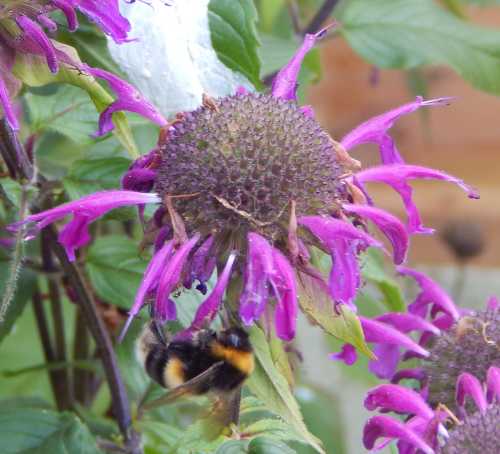 Bee balm is very popular with bees - especially bumble bees.
Bee balm is very popular with bees - especially bumble bees.
Bee balm is apparently available as an annual plant, but my only experience with this plant is as a herbaceous perennial.
Each year, I allow the plant to die back naturally. Most advice recommends cutting back the stems in autumn at the end of the season. In most cases, I am in the habit of allowing nature to take its course, only tidying up any dead stems the following year after the threat of hard frosts has passed.
Monarda can be grown from seed, or clumps of plants can be divided in spring. My patch of bee balm is in a sunny spot, but it will tolerate some light shade for a part of the day.
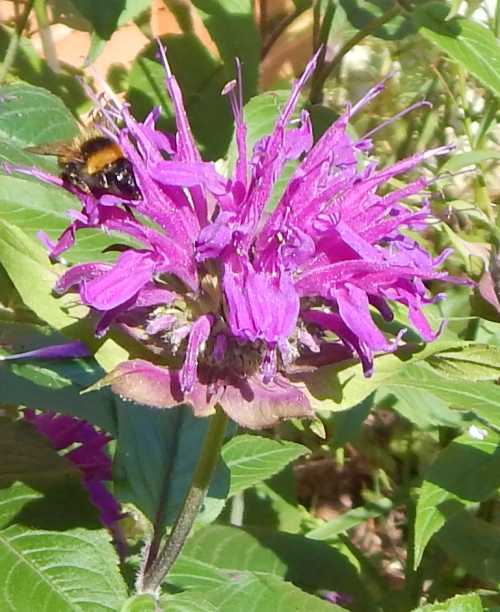 Bumble bee inserting its tongue right into the flower to get at the nectar.
Bumble bee inserting its tongue right into the flower to get at the nectar.
It's a fairly tall plant, so could potentially be located in the middle to the back of the border, but do check the height versus the other plants in the intended location.
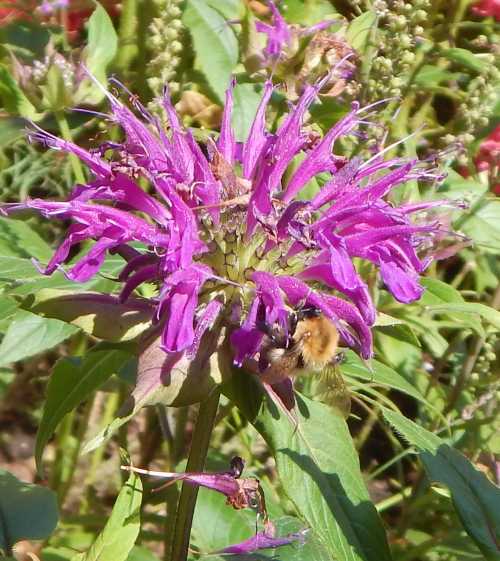 Common carder bumble bee on bee balm.
Common carder bumble bee on bee balm.More articles about bees and plants
- Bees And Brambles: The Value Of Brambles To Bees Also known as blackberry bush, research shows each bramble flower secretes lots of nectar for bees!
- Bees And Bee Balm Bee Balm (Monarda) - also known as 'Bergamot) is a herbaceous perennial which is attractive for bees.
- 30 Fantastic Garden Flowers For Bees Flowering plant recommendations for the perfect bee garden.
- Bees love lupins – but so do slugs and snails, so what can you do? Here's a way to protect your lupins....using garlic!
- Plant Oregano For Bees (Marjoram) It's rich in nectar, and attracts bees, butterflies and hoverflies in summer. Here's how to plant it.
- Fennel Pollen And Nectar Bees love fennel! How to grow it, gather it, and the many uses of fennel seeds and pollen.
If you found this page helpful or interesting, I'd really be grateful if you would share it with others - if not this page, perhaps another, such as Gardening For Bees.
Thank you so much :) .